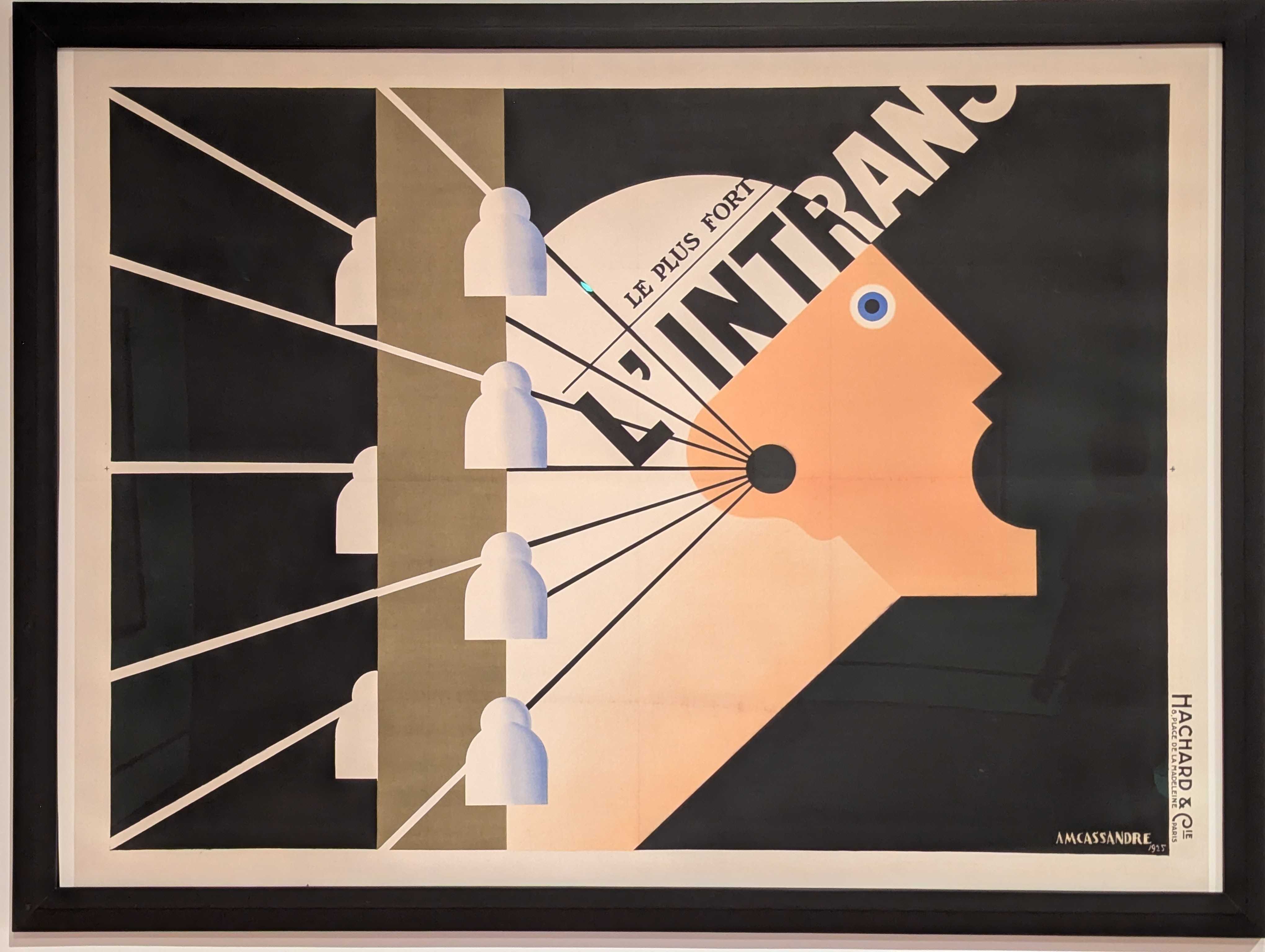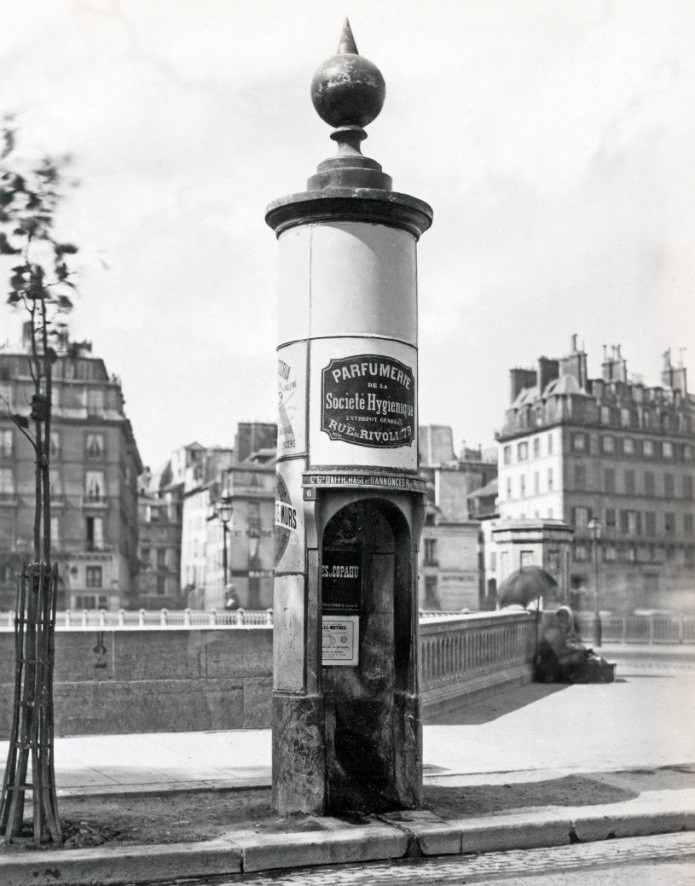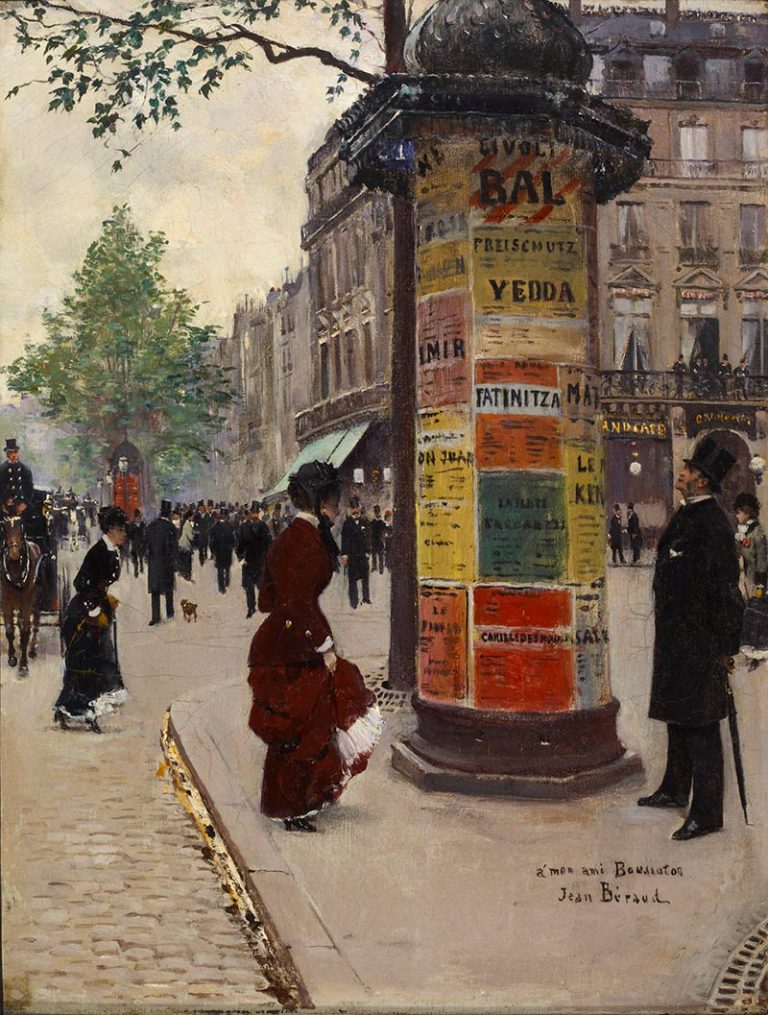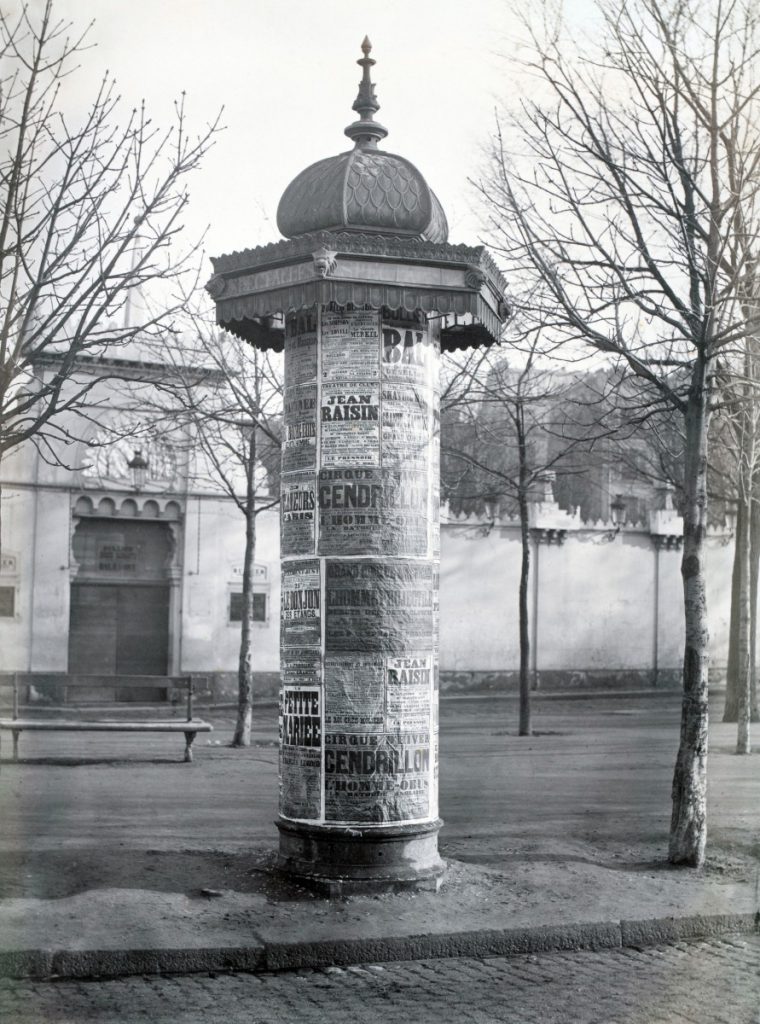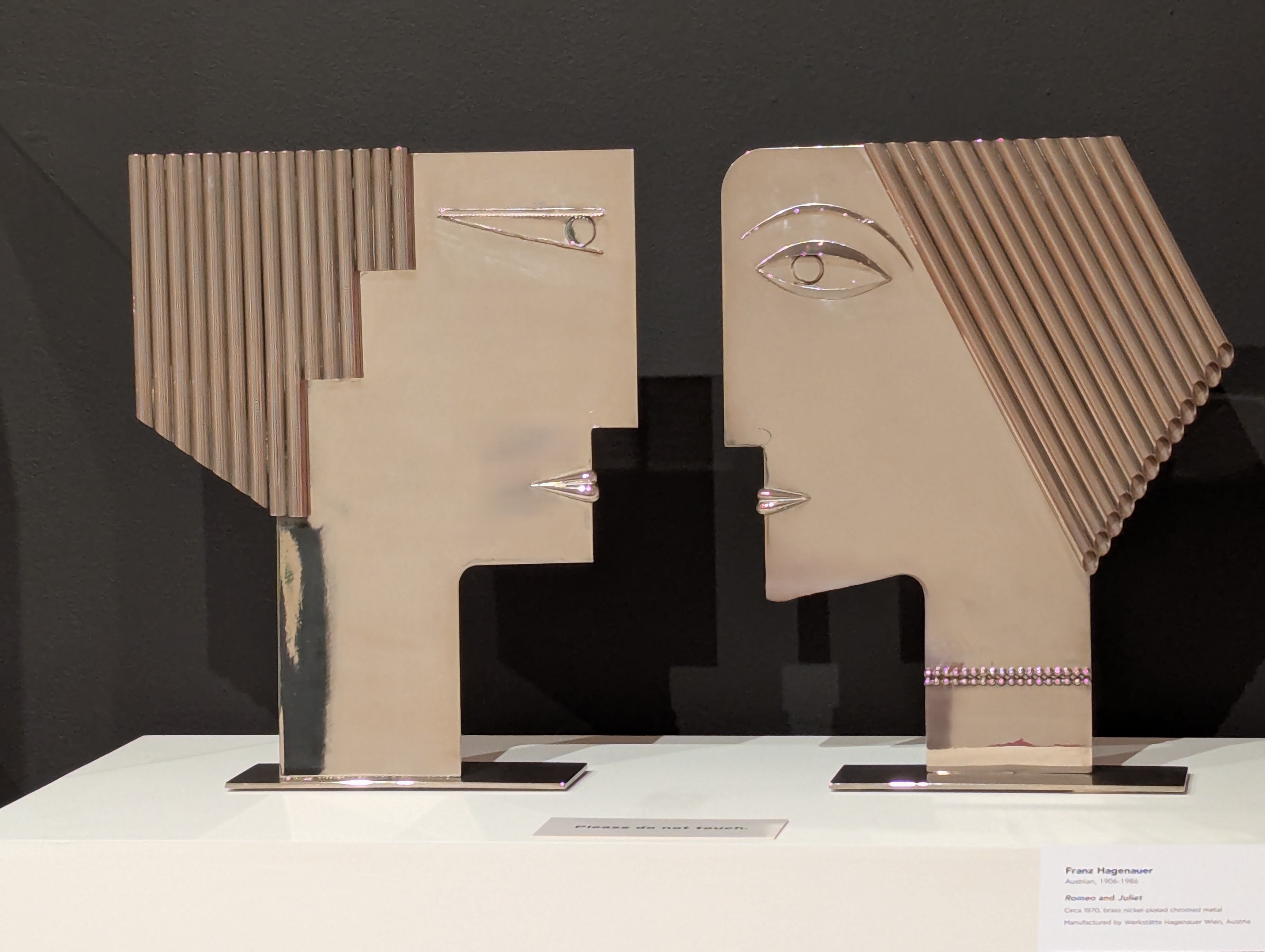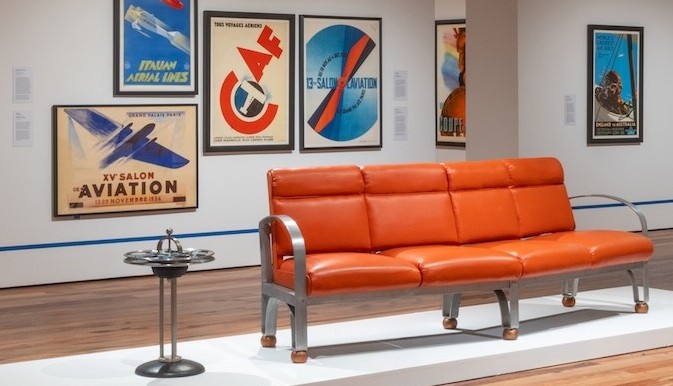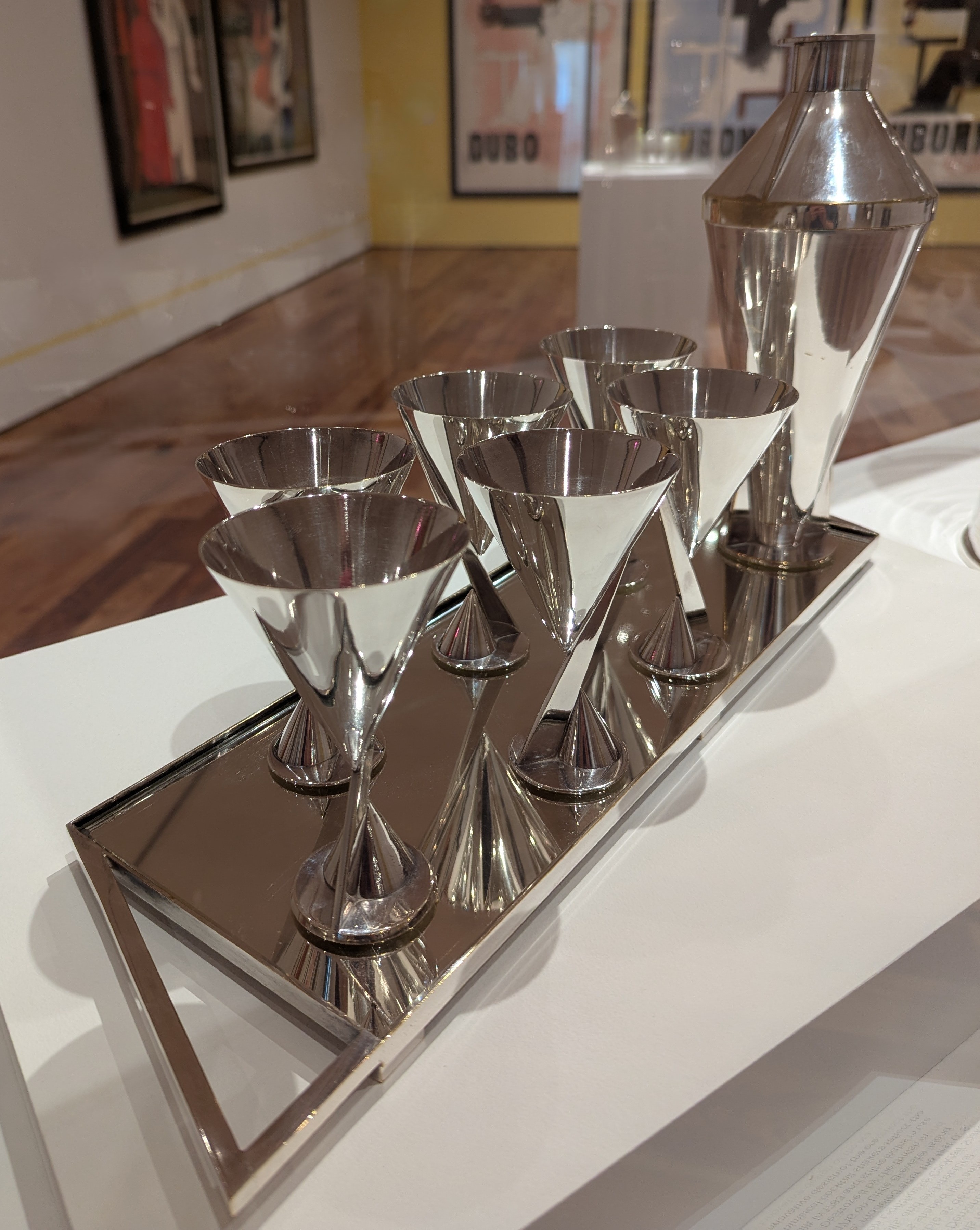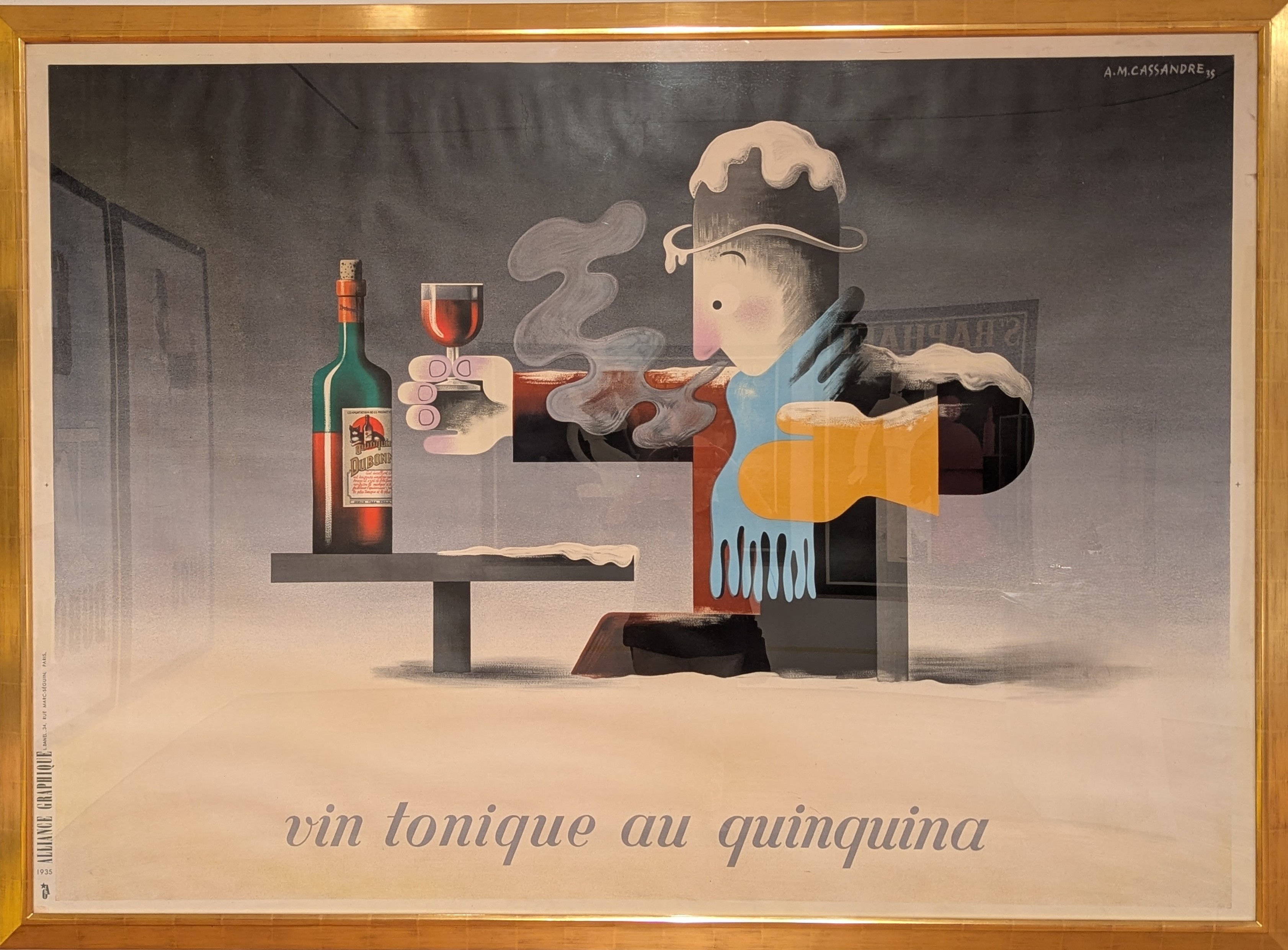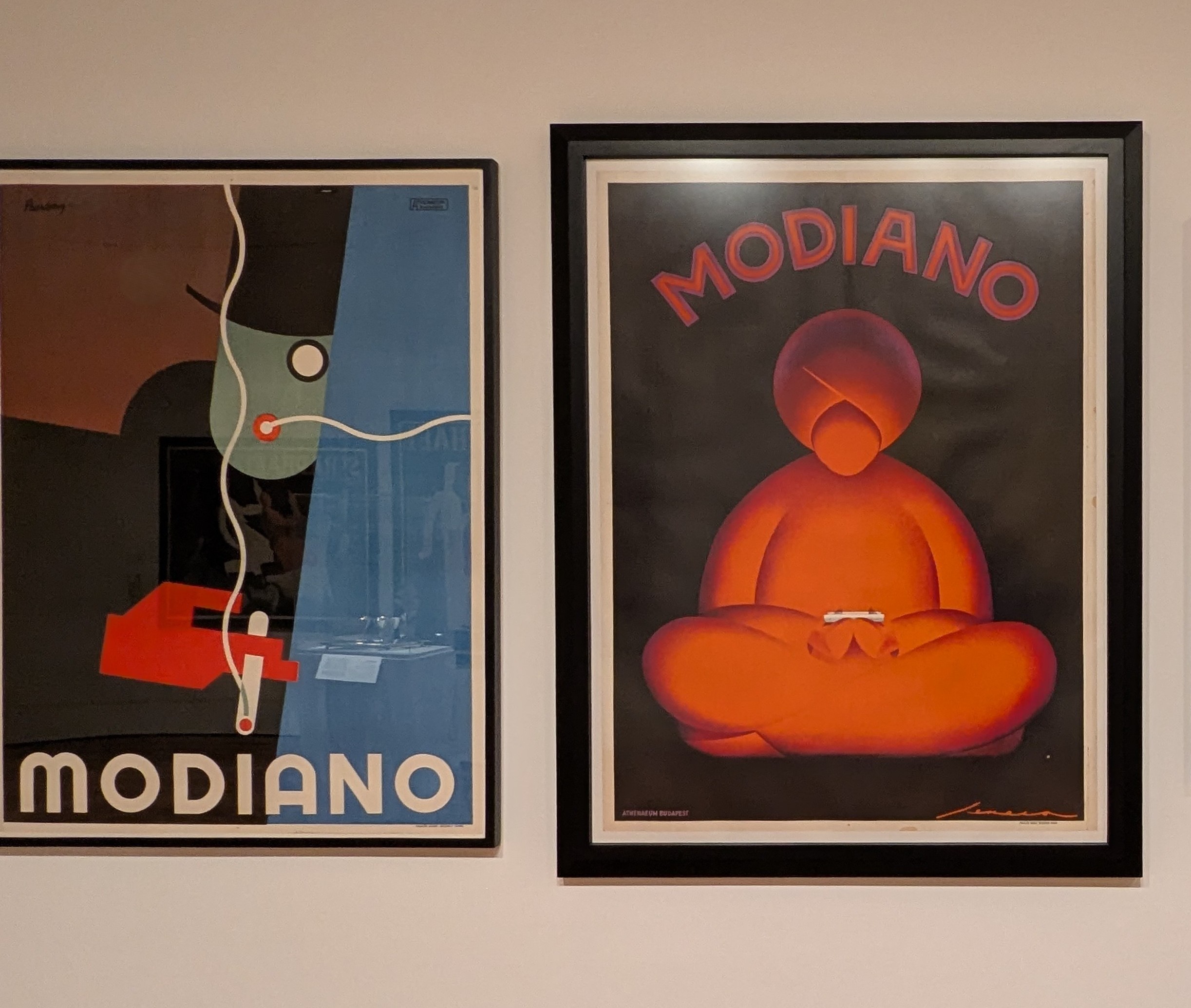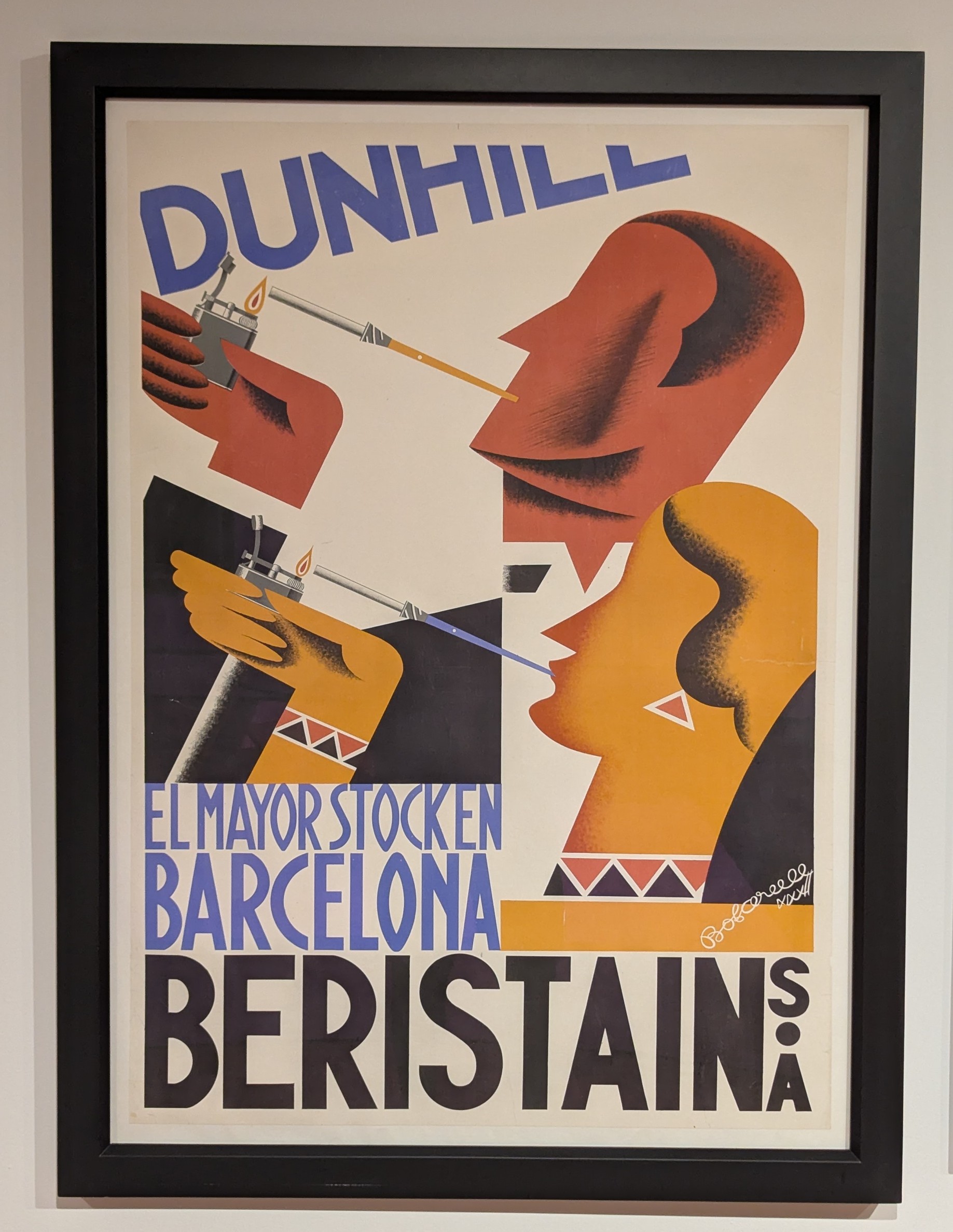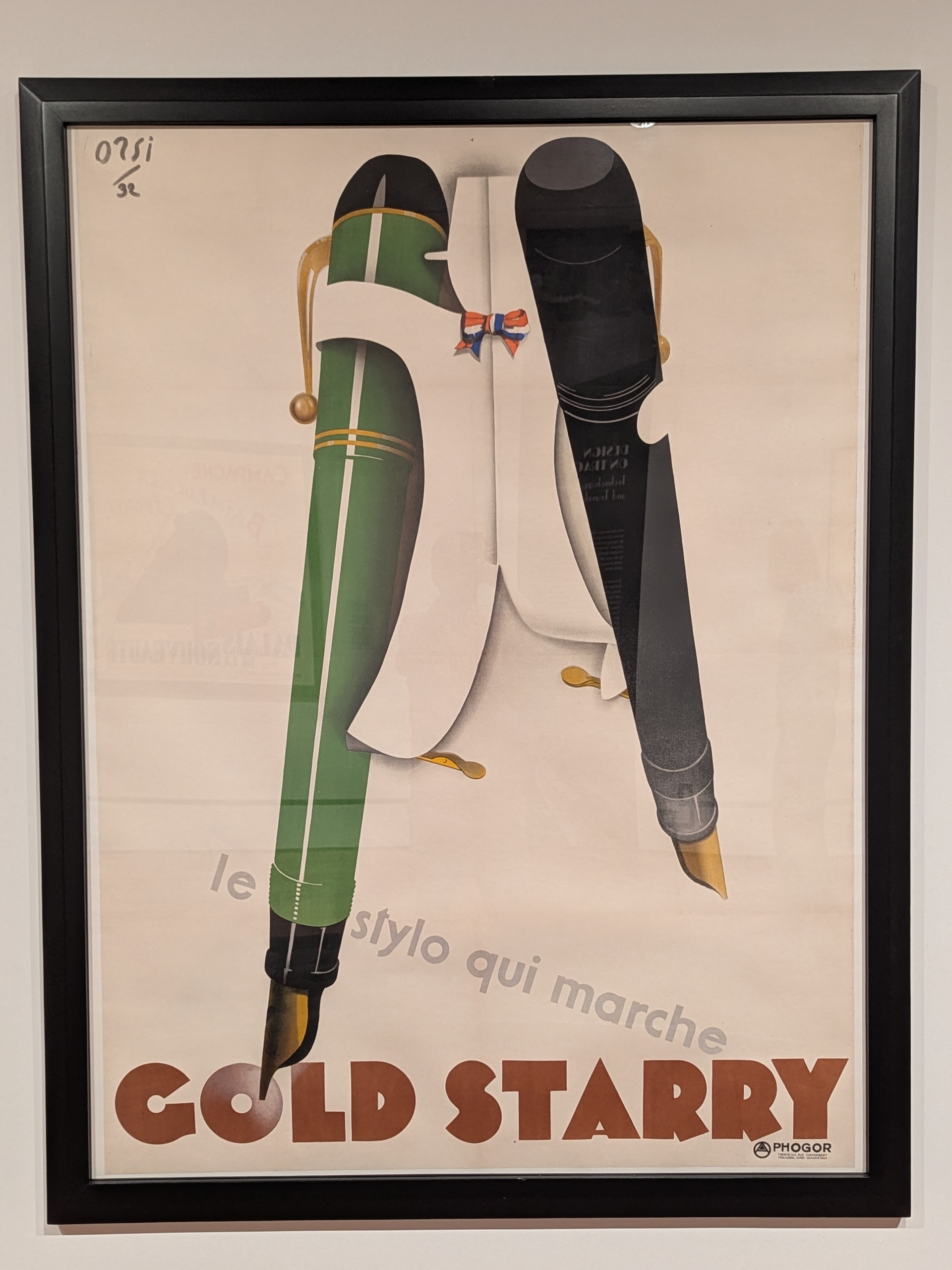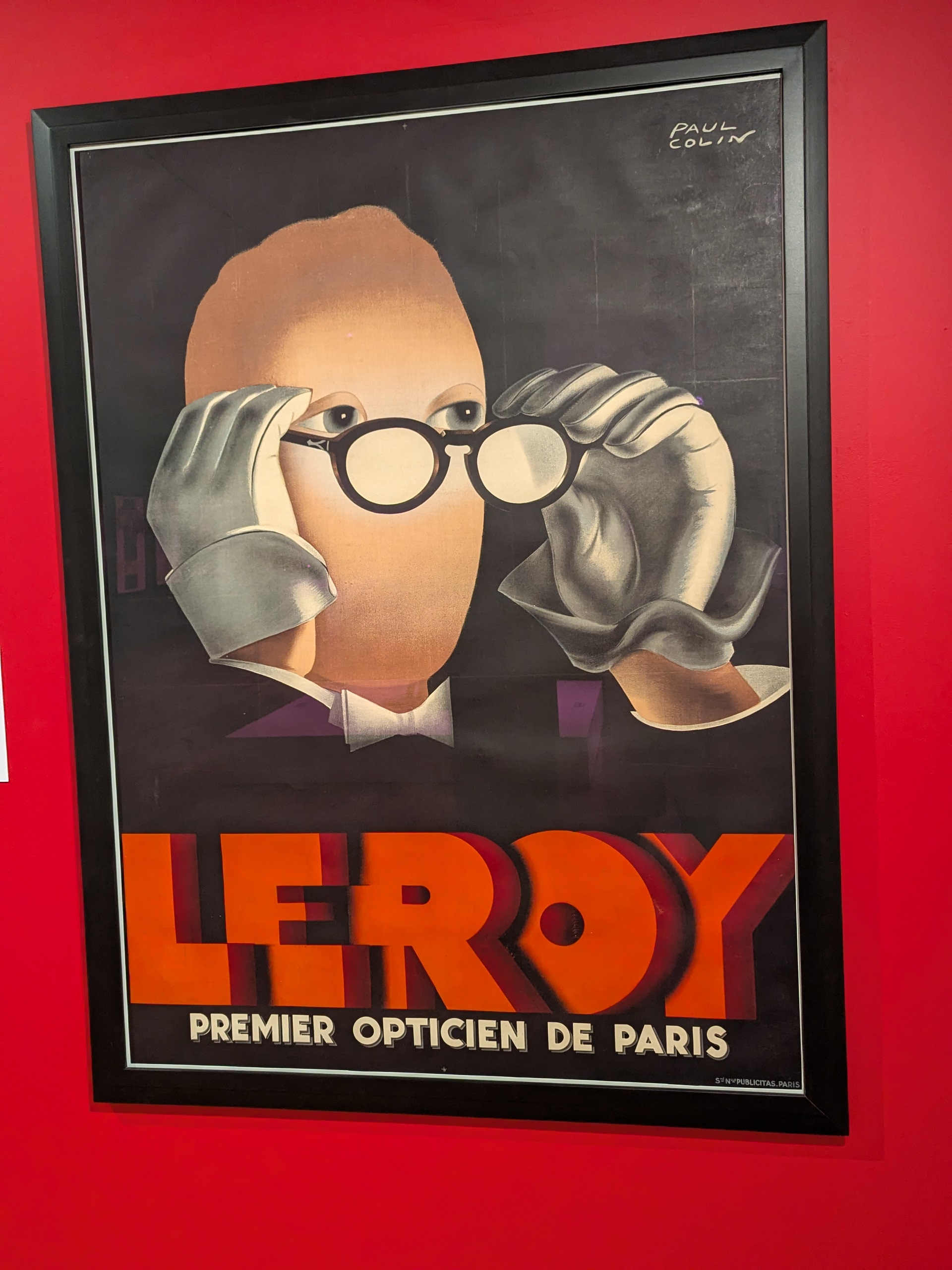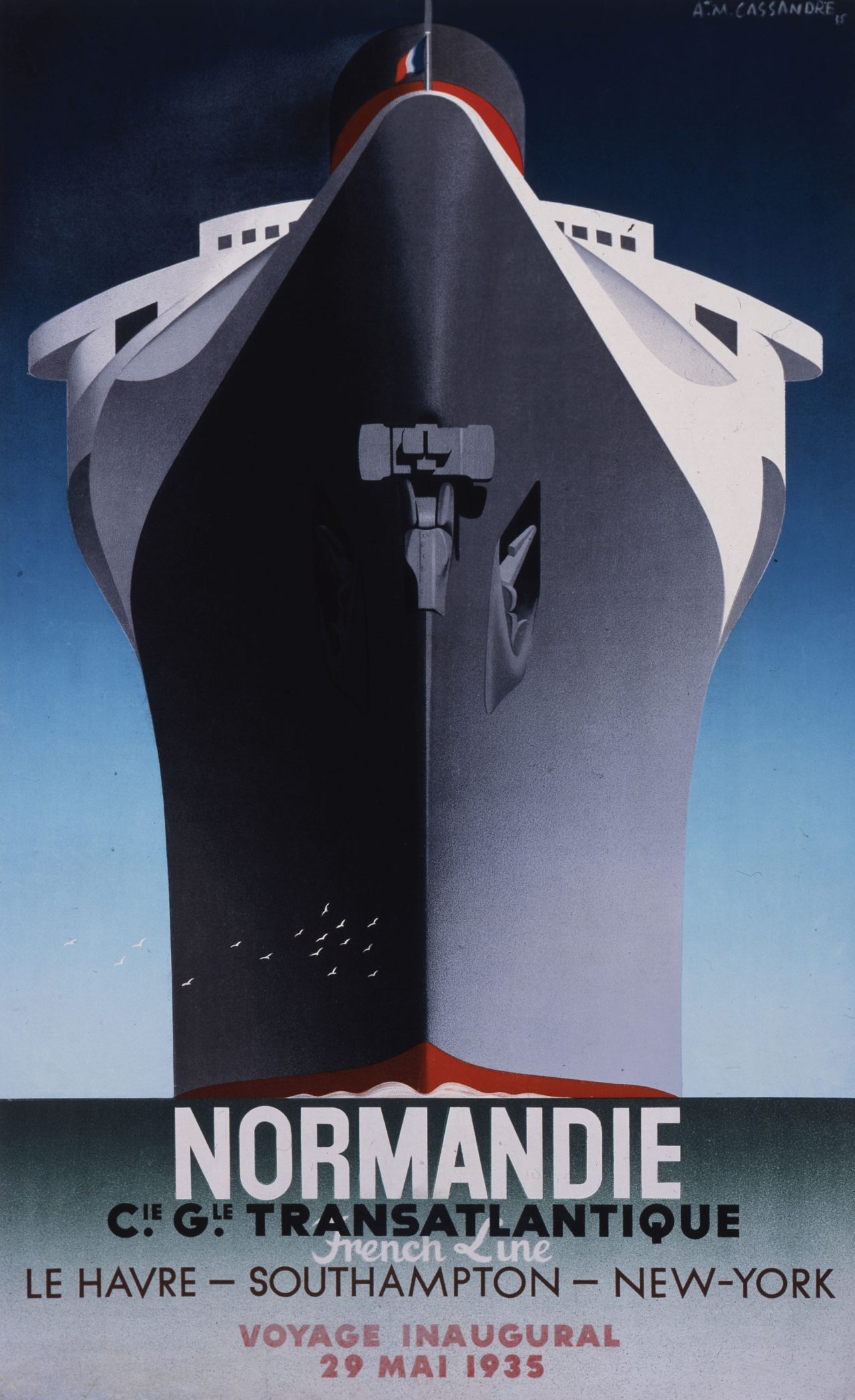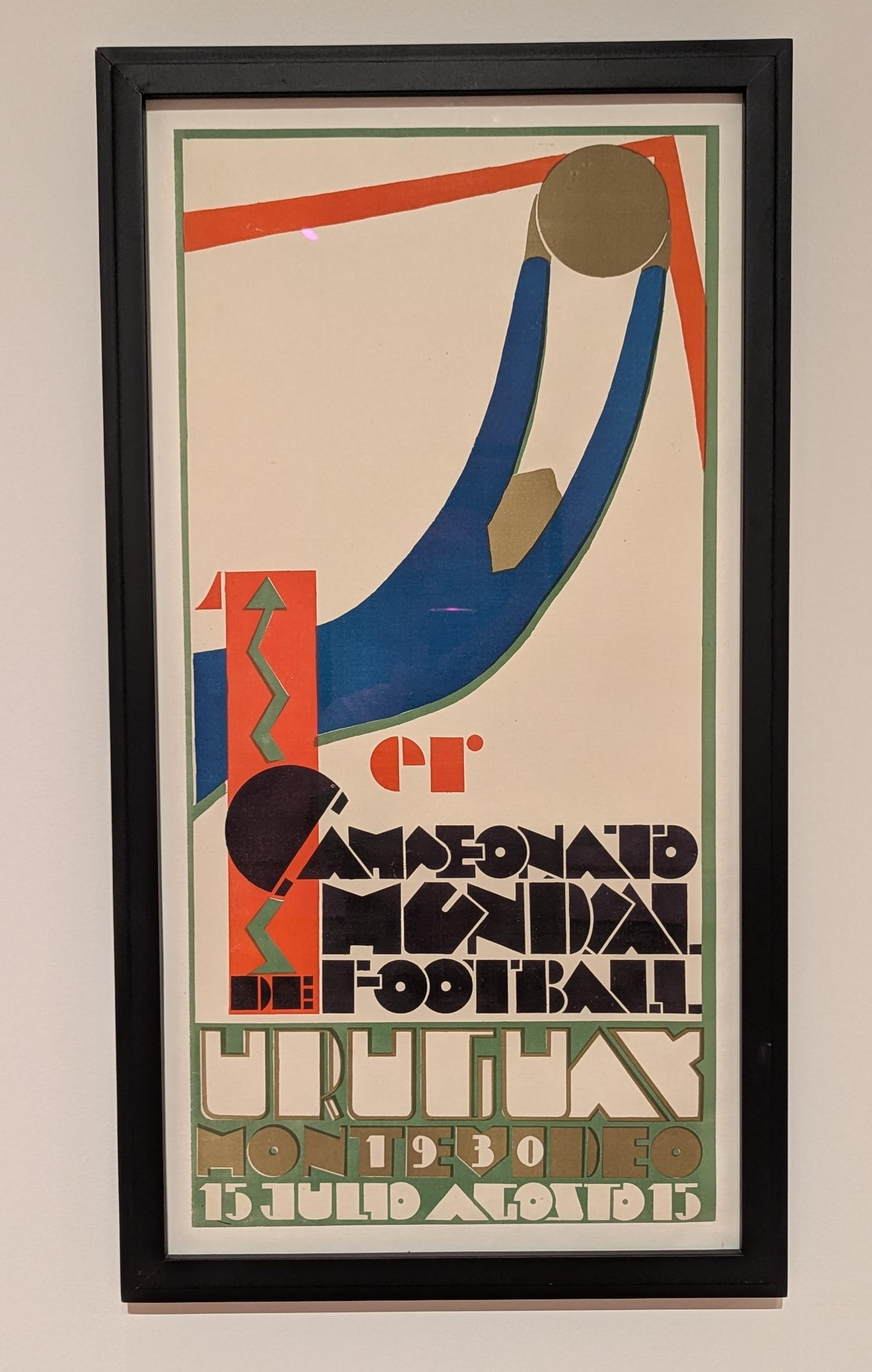A mark of a good art exhibition is that it expands our range of vision: historically, geographically, culturally. Solid explanatory text on the gallery walls, or a really good docent, can turn a show from being “just pictures on the wall” into a magic carpet ride, revealing a view far beyond our own personal experience.
Art Deco: The Golden Age of Illustration (on through Mar 29 2026) at the Sarasota Museum of Art of Ringling College of Art and Design in Sarasota FL, is this kind of show. At first, I was doubtful. “Advertising posters? They’re dedicating their entire 2nd floor of the museum for the entire winter season to a poster show?”
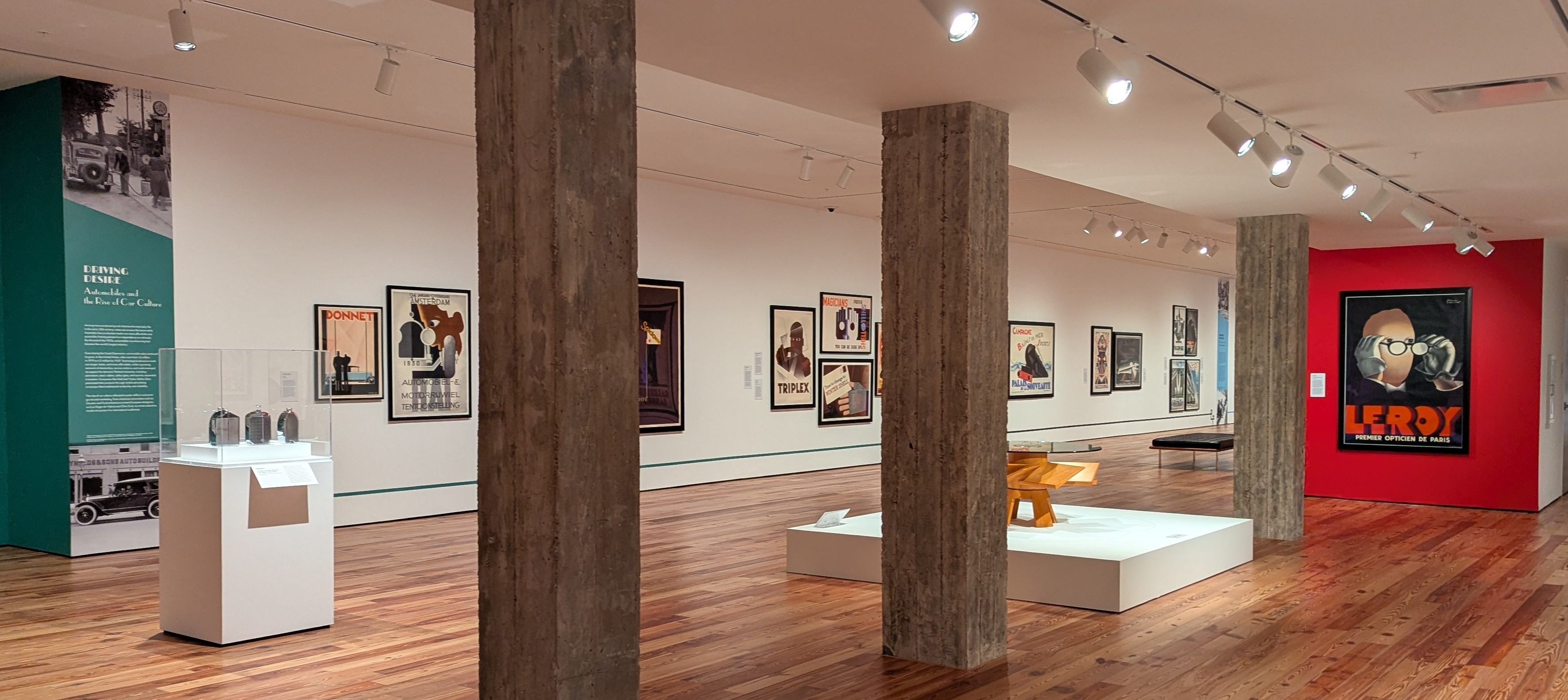
From my first step into the first gallery, I knew … it’s much, much more than “just posters on the wall.” If you appreciate the principles of Art Deco going in, you’ll love this exhibition. If you’re not already familiar with the strong geometry and vibrant colors of Art Deco design, you’re going to be amazed by how such simplicity can communicate so much.
“I think that people will be very surprised when they see the exhibition,” says Virginia Shearer, Executive Director of SAM. “Unlike the advertising that you see today, where it’s an actual photograph of the object you want to buy, what you’re seeing here is the artist’s interpretation of the car, cigar, airplane, drink or whatever the product is that they’re trying to sell.”
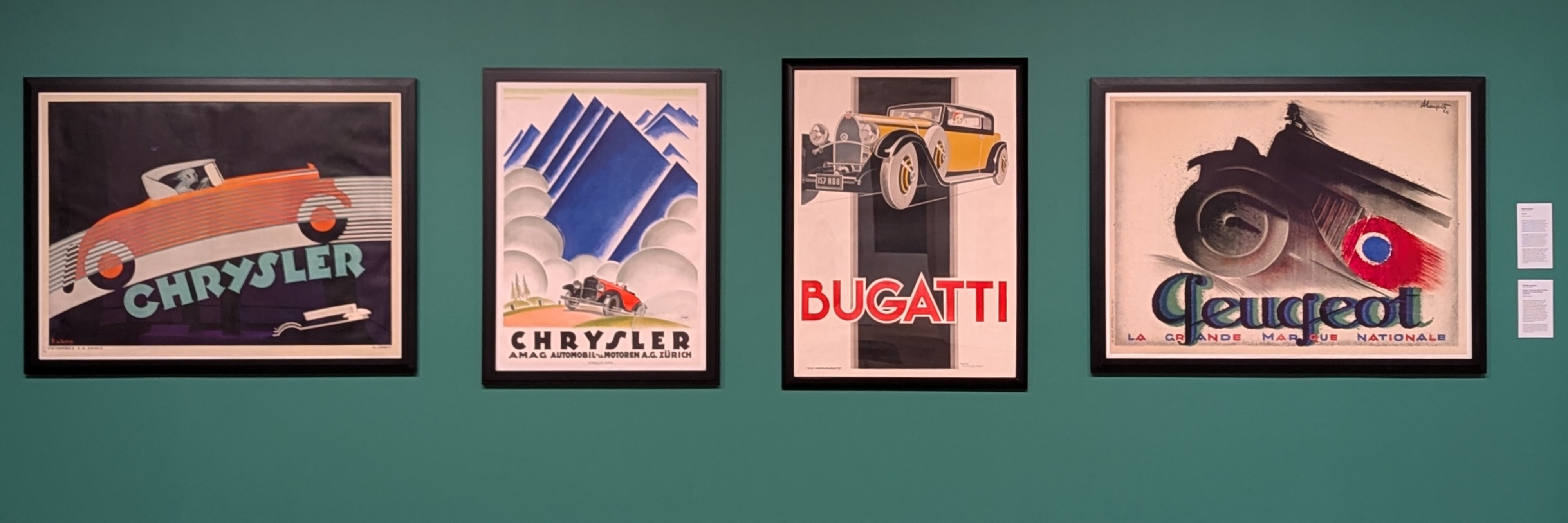
In the West, the period between the World Wars was characterized by an aspirational consumer exuberance that was fueled by economic growth, new technologies and changing social norms. This environment produced a surge in advertising among both commercial and government entities wishing to influence consumer behavior.
Very quickly, this exhibition brings into focus an awareness that – without internet, or even TV or a plethora of full-color magazines – advertisers had few promotional outlets available. In 1930, only 40% of American households had a radio and in Europe the rate was about half that.
What advertisers did have at their disposal was walls. Most of these posters were designed to be pasted on the exterior of buildings, on storefronts, and in train stations and other large-volume spaces. In the second half of the 19th century in Paris, tall cylindrical columns called Colonnes Morris – after Gabriel Morris who held the exclusive advertising concession — were planted throughout the city, specifically for mounting advertising posters. City sidewalks in Germany sported similar structures.
A quick side note:
Morris got the idea from the “colonnes moresques” (urinals cut into a hollow pillar) that were found all around Paris. The exterior walls of the urinal columns were inevitably covered with advertising posters. Morris, noting how unpleasantly odoriferous it could be to read the ads, came up with the idea of columns dedicated to the single purpose of advertising.
2025 is the centenary of the 1925 Exposition Internationale des Arts Décoratifs et Industriels Modernes (Exhibition of Modern Decorative and Industrial Arts) in Paris, which marked the official birth of the style. The curator’s introductory text, on the wall at the entrance to the show, tells us that “This landmark event, whose name later gave rise to the term Art Deco, showcased cutting-edge modernist design in national pavilions and showrooms representing 20 countries. It signaled a cultural shift in aesthetic values and design preferences, and by the 1930s Art Deco had evolved into a truly international style. (…) Optimism and progress merged with industrial innovation, mass production, and the streamlined aesthetics of the machine age.”
Another quick side note:
The United States declined the invitation to participate because the Secretary of Commerce at the time, Herbert Hoover, believed American manufacturers had “little or nothing” to offer that met the exhibition’s strict requirement of being purely modern and original. Nonetheless, hundreds of Americans flocked to the exposition, bringing back inspiration that fueled the American Art Deco movement.
To celebrate the worldwide centenary of that Expo, Art Deco: The Golden Age of Illustration brings together 100 exemplary posters from the interwar period, created by some of the most influential graphic artists of the time. The posters are drawn from one of the most important private advertising poster collections in the world, the William W. and Elaine Crouse Collection. Several unique and rare items in the exhibit have never been shown before publicly.
“Elaine and I were drawn to Art Deco because of its timeless, sleek and streamlined designs. We have been collecting Art Deco objects and furniture for more than 40 years, and we are still in awe that these modern looking pieces are 80 to 100 years old,” said Bill Crouse.
Also on display, in addition to the posters, are sleek pieces of sculpture and barware from the Crouse collection as well as private and public furnishings on loan from the Wolfsonian-Florida International University in Miami Beach. They showcase the luxurious materials and finishes that were typically used, including rich woods, glass, chrome, stainless steel and brass.
The exhibition is divided into nine thematic sections ranging from automobiles, airlines and ocean liners to drinks and tobacco, rural electrification to bicycle races and soccer matches. Some favorites:
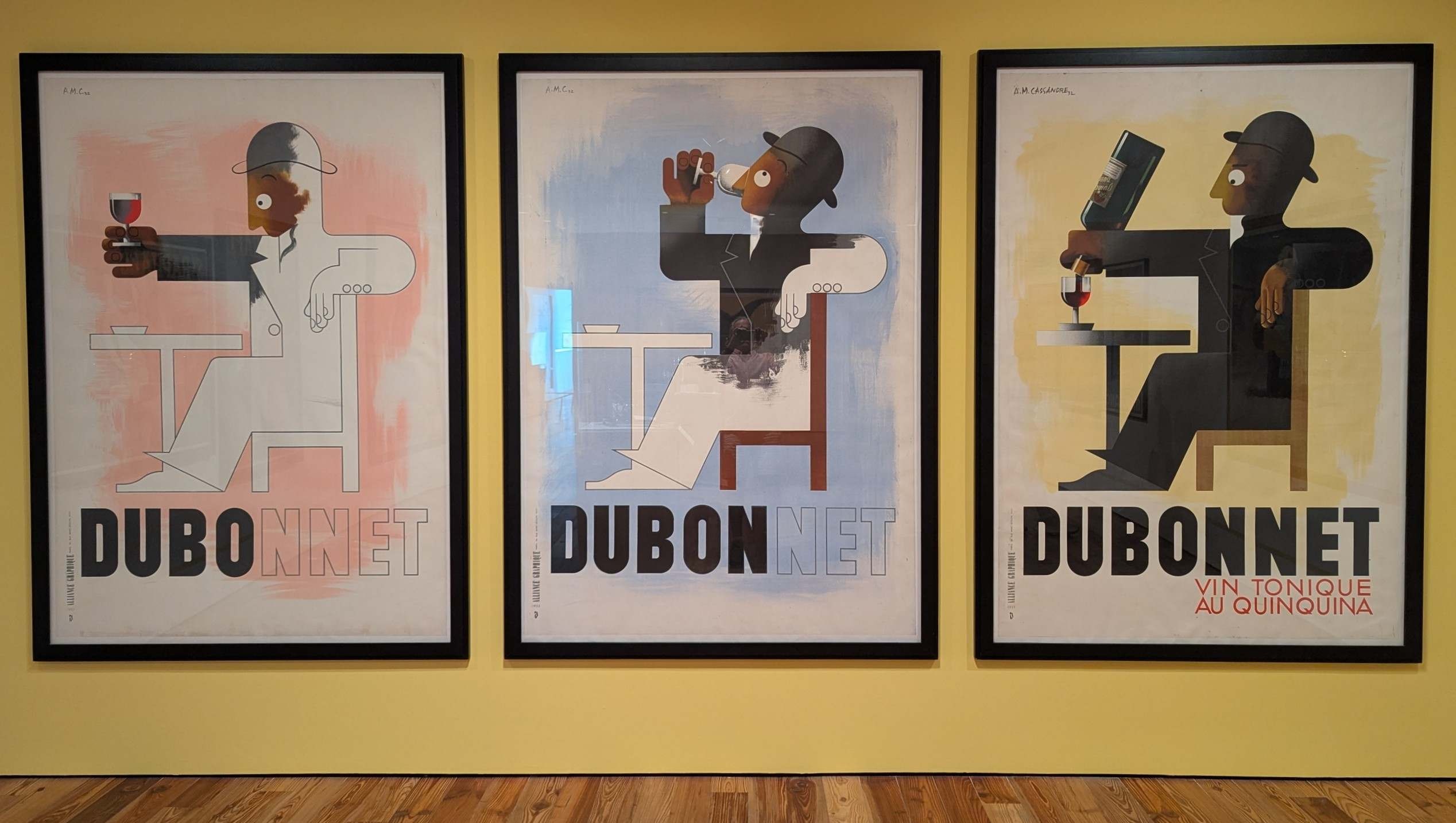
Dubo, Dubon, Dubonnet: From doubt to it’s good to having another. Dubonnet began as a medicinal tonic infused with quinine for the French Foreign Legionnaires, to combat malaria. The sweet, fortified wine masked the bitterness of the quinine . The ad campaign was an instant hit, and the little man wearing a bowler and the Dubo, Dubon, Dubonnet refrain was still being used to promote the brand thirty years later.
Installed side-by-side in the The Art of Indulgence: Eating, Drinking and Smoking section: Warm up with Dubonnet and light up with Modiano rolling papers. Notice that, by 1935 when this poster was produced, Dubonnet had become so widely known — or maybe it was recognition of the bowler hat — that the name of the product is not writ large anywhere on the ad.
The two Modiano ads suggest the high quality of their papers by way of the top-hatted, monocled gentleman on the left, and the implied use of premium Turkish tobacco by the glowing pasha figure on the right.
Normandie: Voyage Inaugural was one of A.M. Cassandre’s most iconic designs. His powerful use of perspective and symmetry, and the flock of tiny gulls, highlight the ship’s massive size (small by today’s standards, of course!). She departed Le Havre on her maiden voyage on May 29, 1935 and had broken the record for speed when she arrived in New York. During WWII the ship was requisitioned by the U.S. Navy, but while being converted to a troop transport in 1942, a welding accident ignited a store of life jackets, causing her to capsize and sink at Pier 88 in New York.
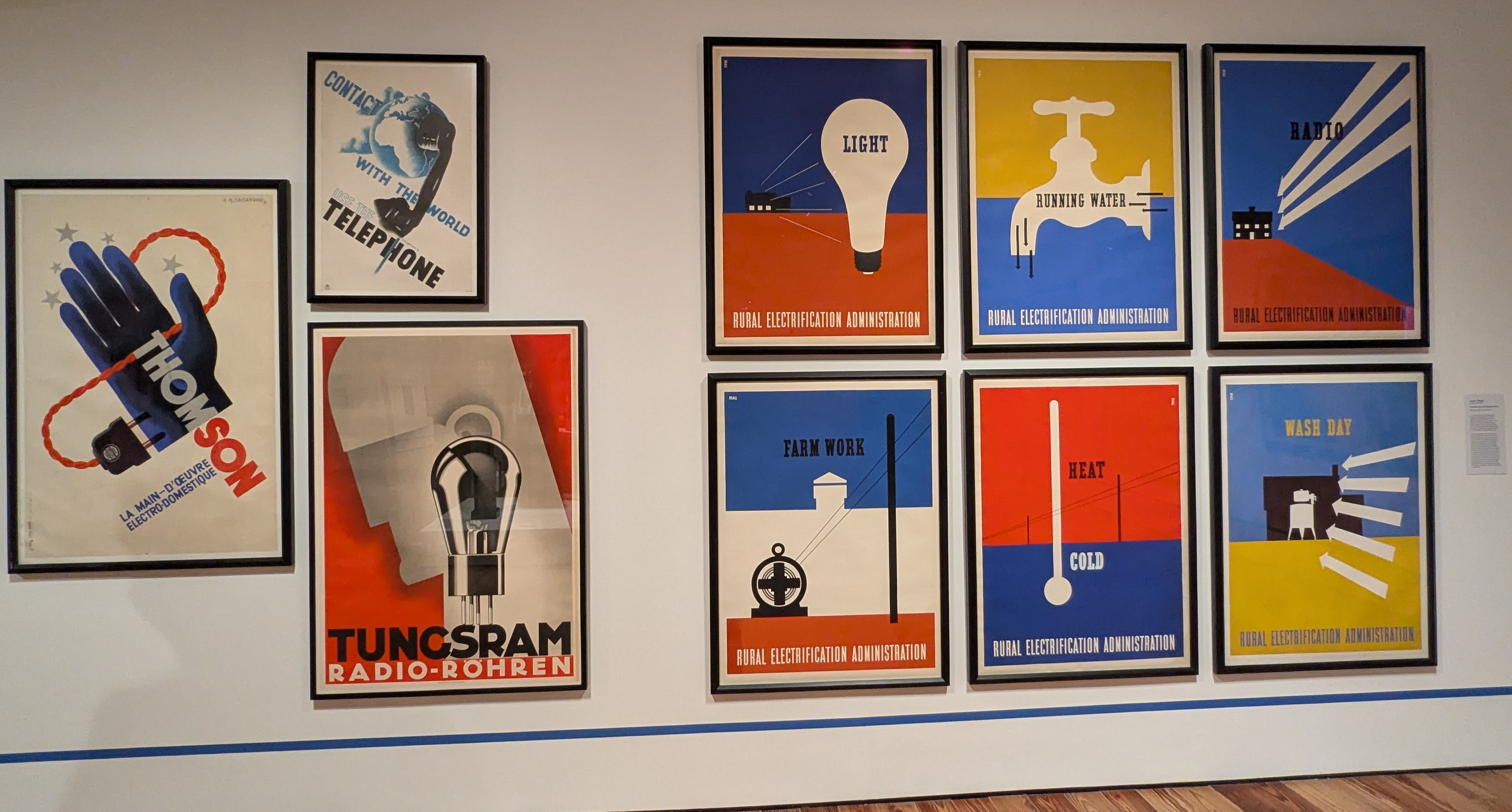
The set of six themed posters on the right side of this installation view of Wired For Life: Power and Communication in the Modern Era, is notable for the strong visual communication created by colorful, simple design. Once a luxury available only to city dwellers, electricity began to reach rural areas in the 1930s as public infrastructure developed across the US. At the time, only 11% of American farms had electricity, compared to 90% in the more concentrated geography of Western Europe. The government’s Rural Electrification Administration was intent on persuading ex-urban Americans of the benefits of electricity. While the REA would connect homeowners for free, they’d have to pay to use the power, so electrification wasn’t necessarily a change everyone was eager to accept.
Rangsook Yoon, senior curator at Sarasota Art Museum who organized this exhibition, says, “These posters offered images of longed-for convenience, indulgent tastes, novel entertainments and solutions to troubles consumers never knew they had. They were selling desires, serving as visual billboards of what living modernity would look like. These stunning posters highlight Art Deco as a style and movement that aligned with the modernity in the turbulent early 20th century.”
Art Deco: The Golden Age of Illustration is engaging on multiple levels, especially visually in the unique graphic style of the Art Deco movement. The signage is very well done, adding excellent context in each themed section, exploring the social changes that occurred between the wars, presaging our lifestyle today. Although the 1930s happened just a matter of a few decades before so many of us were born, seeing these advertising posters makes us realize how disconnected we have become from what life was like for those who came just a generation or two before us. On paper, at least, it seems like a simpler time.
Hmmm … maybe it’s time to plan a little trip …
Sarasota Art Museum of Ringling College of Art & Design
1001 S Tamiami Trail, Sarasota, FL
941-309-4300
Art Things Considered is an art and travel blog for art geeks, brought to you by ArtGeek.art — the only search engine that makes it easy to discover 1800 art museums, historic houses & artist studios, and sculpture & botanical gardens across the US.
Just go to ArtGeek.art and enter the name of a city or state to see a comprehensive interactive listing of museums in the area. All in one place: descriptions, locations and links.
Use ArtGeek to plan trips and to discover hidden gem museums wherever you are or wherever you go in the US. It’s free, and it’s easy and fun to use!
© Arts Advantage Publishing, 2025
